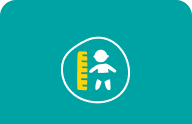What Is Preeclampsia: Signs, Symptoms, and Treatment
Preeclampsia is a rare, serious condition that’s important to watch out for during pregnancy, particularly if you have one of the known risk factors. So read on to learn more about what preeclampsia is, the potential causes and risk factors, signs and symptoms, and the treatment options your healthcare provider may recommend. Being informed about preeclampsia is the first step in helping to prevent or manage this condition.
What Is Preeclampsia?
The definition of preeclampsia is a blood pressure disorder that usually occurs after week 20 of pregnancy in the second or third trimester, formally known as toxemia of pregnancy. A similar condition called postpartum preeclampsia can occur after childbirth.
The high blood pressure of preeclampsia can come on quickly or there can be a slow but steady increase in your blood pressure. The severity can also vary from mild to severe:
Mild preeclampsia. Even a slight increase in blood pressure can be a sign of preeclampsia; however, as the symptoms are not severe you might not even notice them. Mild preeclampsia will still require close monitoring by a doctor, and your labor may be induced once the pregnancy is full-term.
Severe preeclampsia. Your blood pressure readings would be very high, and you would probably notice severe symptoms of preeclampsia (more on these below). Severe preeclampsia may require hospitalization. Your doctors will treat your symptoms, but in very rare and extreme cases your labor may need to be induced.
Your healthcare provider will be checking for preeclampsia regularly at your prenatal visits and treating it, if necessary. Most pregnant people with preeclampsia go on to have healthy babies.
Eclampsia: It’s easy to confuse preeclampsia with eclampsia. Eclampsia is a more severe and serious condition and involves seizures that are linked to high blood pressure. It usually requires the immediate delivery of the baby, regardless of how far along the pregnancy is.
Postpartum preeclampsia: Postpartum preeclampsia occurs after the delivery of your baby, and you may get it even if you showed no signs of preeclampsia while pregnant. Postpartum preeclampsia symptoms may appear as early as 48 hours after delivery, or up to 6 weeks later. These symptoms are usually the same as for preeclampsia; however, giving birth is the cure for preeclampsia, and the treatment for postpartum preeclampsia is usually medication to lower your blood pressure and to prevent seizures.
How Common Is Preeclampsia?
Preeclampsia affects about 5 to 8 percent of pregnancies in the United States. That’s around 1 pregnancy out of 25.
When does Preeclampsia Start?
As we mentioned above, preeclampsia usually starts during the second half of a pregnancy, generally after 20 weeks. If this condition occurs before 34 weeks of pregnancy, it’s known as early-onset preeclampsia. It can also occur after delivery.
What Causes Preeclampsia?
Although it’s not always clear what causes preeclampsia during pregnancy, there are some known risk factors, including if
this is your first pregnancy
this is your first pregnancy by a new partner
it’s less than 2 years or more than 10 years between pregnancies
you had preeclampsia in a previous pregnancy
you have a family history of preeclampsia
you have a history of high blood pressure or kidney disease
you're over 35 years old
you're carrying twins, triplets, or other multiples
you have diabetes, a blood clotting disorder, lupus, or migraines
you're obese
your pregnancy is a result of IVF.
If you have any of these risk factors, your healthcare provider will discuss this with you and determine whether you’re at moderate or high risk of preeclampsia.
Signs and Symptoms of Preeclampsia
The main or early signs of preeclampsia while pregnant are high blood pressure, a high amount of protein in the urine (proteinuria), and other signs of damage to the organs. Your healthcare provider will likely detect preeclampsia during your
Some other symptoms or manifestations of preeclampsia during pregnancy include:
A persistent headache
Seeing spots or other changes in vision
Pain in the upper abdomen or shoulder
Nausea and vomiting (in the second half of pregnancy)
Sudden weight gain
Sudden swelling in face and hands
Difficulty breathing
Decrease in urine output.
Some of these symptoms of high blood pressure in pregnancy (like swelling, nausea, and headaches) can also be normal symptoms of pregnancy, so it can be difficult to tell when this is a regular headache or a headache from preeclampsia, for example. However, a preeclampsia headache is severe and persistent, similar to migraine, and doesn’t go away with pain medication. Go straight to your healthcare provider or visit the emergency room if you notice any warning signs of preeclampsia such as severe headaches, severely blurred vision, severe pain in the abdomen, or severe shortness of breath.
Check out more pregnancy warning signs to keep an eye on in our informative article.
Preeclampsia Treatment Options
Delivering the baby is the only cure for preeclampsia. However, a preterm birth may be dangerous for the baby, in which case your healthcare provider will consider the best treatment options for you, depending on whether you have mild or severe preeclampsia, and how far along your pregnancy is.
Mild preeclampsia. Your healthcare provider may suggest you’re treated in the hospital or at home as an outpatient. You may be asked to monitor your baby’s movements and measure your blood pressure at home. You may also be advised to avoid overexertion and rigorous physical activity. More frequent prenatal checkups will be required during this period (at least once a week). At each checkup, your provider will likely check your blood pressure, perform blood tests, and perform an ultrasound to check your baby’s health and well-being. Your healthcare provider may recommend that your labor is induced at week 37.
Severe preeclampsia. Treatment for severe preeclampsia is usually performed in the hospital. If your preeclampsia gets worse, labor may be induced at or after 34 weeks. You may be given medications to help reduce blood pressure and prevent seizures. Corticosteroids may also be given to help improve liver and platelet function, and to help your baby’s lungs mature.
Potential Preeclampsia Complications
Preeclampsia complications might include:
Short-term: HELLP syndrome (a rare, but life-threatening liver disorder), eclampsia (a more severe form of preeclampsia involving seizures), and placental abruption (when the placenta detaches from the uterus wall, causing heavy bleeding).
Long-term: Greater risk of cardiovascular disease, kidney disease, heart attack, stroke, brain injury, and high blood pressure later in life. A higher chance of preeclampsia in the next pregnancy.
Although preeclampsia is a serious condition that can be fatal if untreated, your healthcare provider will be able to guide you through your treatment options.
How Does Preeclampsia Affect the Baby?
Preeclampsia might also have an effect on the baby, specifically a low birth weight. Inducing labor before the pregnancy is full-term is one solution for severe preeclampsia, but the potential health risks for the baby depend on how premature the birth is. It's estimated that 15 percent of premature births in the US are due to preeclampsia.
Some pregnant people wonder if preeclampsia might make a vaginal birth more complicated, but actually, a vaginal birth may be safer than a cesarean section in some cases. Your provider will be able to advise you on the options for your specific situation.
How to Prevent Preeclampsia
Avoiding preeclampsia is not always possible, but if you have one of the known risk factors, you can take some precautions:
Identify and address any risk factors, preferably before you become pregnant. For example, get high blood pressure under control; lose weight if necessary; and if you have diabetes, make sure the condition is well controlled before getting pregnant. Your healthcare provider can advise you on the best steps to take if you have already become pregnant, but have one of these risk factors.
Some healthcare providers may recommend taking a low dosage of aspirin throughout the pregnancy if you are at a high risk.
The Bottom Line
Preeclampsia is a rare and treatable condition that your healthcare provider will be able to monitor and manage. Keep in mind that most people with preeclampsia have healthy babies, and it's just one of the many risks you need to know about and keep an eye out for during your pregnancy.
While you’re here, why not download our Pampers Club App for rewards on your future diaper purchases!
How We Wrote This Article The information in this article is based on expert advice found in trusted medical and government sources, such as the American Academy of Pediatrics and the American College of Obstetricians and Gynecologists. You can find a full list of sources used for this article below. The content on this page should not replace professional medical advice. Always consult medical professionals for full diagnosis and treatment.
Join a World of Support
through Pregnancy and Parenthood.
TRACK WITH TOOLS
LEARN WITH EXPERTS
GET REWARDED












